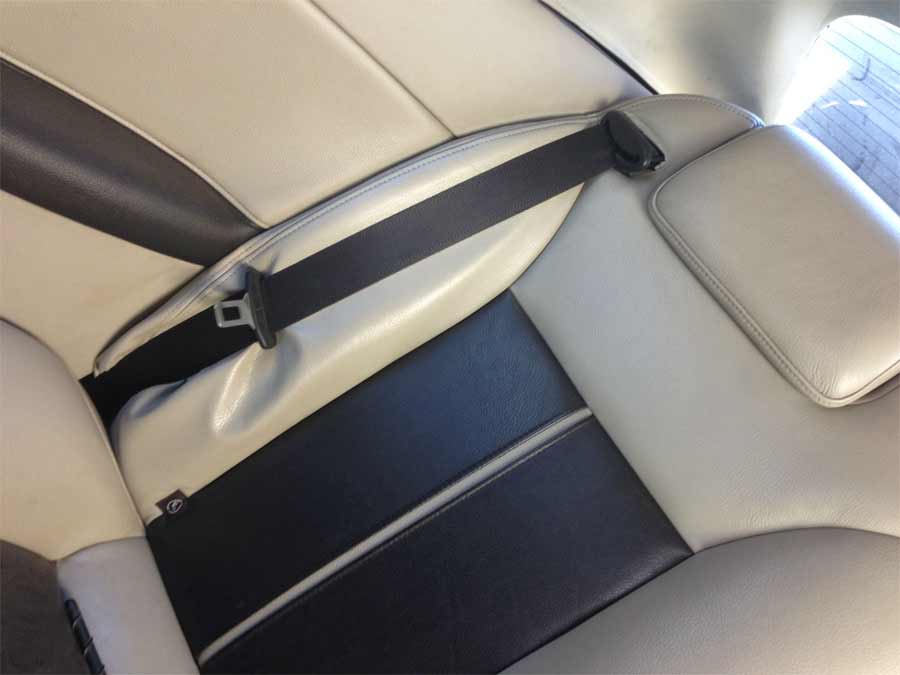Nils Bohlin, who passed away in 2002, was the flight engineer who switched from Saab to Volvo and invented the three-point belt. It is his invention that underlies the world company Autoliv, which wants part of the honor for the increased crash safety in the cars.
Nils Bohlin, who was born in Härnösand in 1920, was employed by Saab’s aviation department in the 1950s, where he developed the ejection seats in Saab’s supersonic plane, writes journalist Joakim Thelander in the Popular History magazine.
When the legendary Volvo boss Gunnar Engellau wanted to market Volvo in the USA, by making Safety a selling point, he recruited Nils Bohlin from Saab. Gunnar Engellau saw the similarities between the pilot in the ejection seat and a car driver at the time of the collision, and he was right.
A three-point Safety belt
After only a few months of testing and development work, the result came in the form of a three-point belt. A strap over the chest protected the upper body and another strap over the hips protected the lower body. In August 1958, Nils Bohlin received a patent for his invention and in 1959 the three-point belt became standard in Volvo Amazon and Volvo PV 544.

There are actually some very early patents for belts designed for motor cars. Probably the oldest of these is American and was issued in 1885, coinciding with the debut of the automobile. A few years into the 1900s, a French patent was issued for a safety system encompassing both a lap belt and a diagonal belt that stretched across the chest. At the same time, another belt received a patent in England, but it was in the USA that the first safety belts were used on a more widespread basis. In American racing during the 1910s and 20s, tough battles were fought with extremely fast, but not always very stable, cars and in 1922, a race car driver was the first to use a safety belt in the USA.
After that, interesting, In 1969, Czechoslovakia became the first in the world to introduce a law on mandatory seat belt use. In Sweden, it did not become law until 1975 and then only in the front seat. Today, almost all cars have three-point belts.
Nils Bohlin’s invention was gradually developed and the roller belt saw the light of day in 1967. And, at the same time, It became a success and interest in Autoliv grew. In 1975, Autoliv was taken over by Gränges Weda, who was also in the seat belt industry, and which developed the Essem seatbelt retractor in 1967. Gränges was in turn acquired by Electrolux in 1984 and thus began its strong growth through a number of corporate acquisitions around the world – in known Electrolux ways.
The Autoliv company is founded by Lennart Lindblad under the name Lindblads Autoservice AB. in 1965, The founder Lennart Lindblad develops the company’s first seatbelt, a two-point static belt. After 25 years, Lennart Lindblad leaves the company in 1977.
In 1994, Electrolux was sold Autoliv on the Stockholm Stock Exchange. It was then the world’s largest seat belt company. On the other side of the Atlantic, the American company Morton ASP had embarked on a different line of passenger protection – the airbags – and grew in much the same way as Autoliv.

In 1997 the two companies formed the American company Autoliv Inc, which dominates the world car safety market with its airbags and seat belts. According to all crash tests conducted by numerous institutions and institutes, such as Euro NCAP or IIHS, the products of this company are always at the top in terms of quality and efficiency, and cars with safety products from this company get the highest crash safety rating, five stars.
“Autoliv is the only car safety company that has deliveries to all the new 5-star cars Renault Vel Satis, Mercedes E-Class and Saab 9-3“, Autoliv proudly wrote in a press release a little over ten years ago after the results of tests of the then-new models were presented, among which was Saab 9-3.











